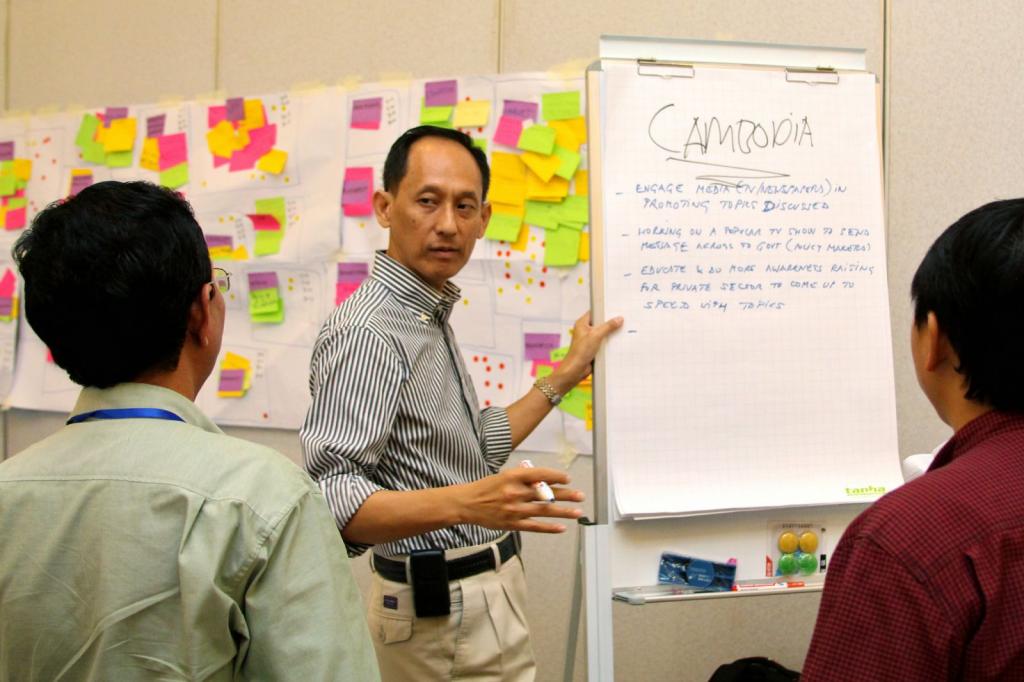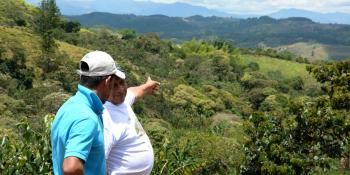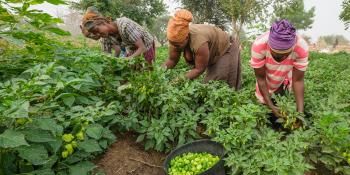Sharpening the focus on future possibilities

A team of scientists brings together a wide range of stakeholders to create plausible future scenarios and uses multiple models to add a quantitative perspective.
Scenarios planning is a method that has its roots in military strategy and was adapted to the business arena in the late 1960s by Royal Dutch Shell. The method is used to help think through plausible alternatives of the future. A team of researchers within the CGIAR Research Program on Climate Change, Agriculture and Food Security (CCAFS), working in conjunction with scientists from other CGIAR centers and research programs, has adapted this tool over the past several years to help in the fight against climate change. By guiding national decision makers to envision how climate change might affect their countries and what kinds of trajectories might occur in terms of trade, population growth, and other driving factors, they can evaluate how potential new policies will hold up under a multitude of uncertainties.
There are two strengths to the scenario planning process being pioneered by CCAFS and partners: (1) involvement of a wide range of stakeholders, and (2) use of a multi-model ensemble to quantify plausible scenarios.
First, the regional workshops in which these scenarios are created bring together a wide range of stakeholders to map out possible sets of future circumstances through a participatory process. Not only are government leaders involved, but also members of civil society, research institutions, and the private sector. Having a diverse group of participants helps allow for a broad set of views and avoids the problem of ‘groupthink’ that can sometimes result in scenarios that are too narrow.
Second, once the scenarios are created and the narratives developed, a team of researchers uses several mathematical models to explore how the different plausible futures might impacts such things as per capita calorie availability, income, land use patterns, or biodiversity. This use of several different models can illustrate different possibilities and help understand the impacts of different pathways.
For example, a recent publication in Regional Environmental Change by the scenarios team and partners, which analyzed the interplay between agricultural development and biodiversity in Uganda, Rwanda, and Burundi, found that “without protected areas, biodiversity losses are higher and that expanding protected areas to include other important biodiversity areas can help reduce biodiversity losses in all three countries.” The United Nations Environmental Programme World Conservation Monitoring Centre (UNEP-WCMC) highlights more of the findings from that article in a recent blog post.

Participants in the Southeast Asia scenarios workshop held in November 2013. Photo: E. van de Grift
The melding of the two strengths, a diverse group of stakeholders and use of an ensemble of models, was first applied in a workshop in Vietnam, where a diverse set of stakeholders from a wide range of sectors in Cambodia, Laos and Vietnam collaborated to develop four multidimensional scenarios focusing on future agricultural development, food security and climate change. Through building these multidimensional scenarios, stakeholders were challenged to consider potential interactions between varied parts of complex systems, like society and the environment. By doing this with a diverse set of stakeholders from public and private sectors, participants considered the future in a holistic and multidisciplinary manner. They were asked not only how different the future might look from the present, but also how they might respond to and shape future change. In so doing, regional stakeholders gained a better understanding of future uncertainty, while introspectively reviewing their own assumptions on the drivers of change, while creating four diverse scenarios that presented challenging plausible futures.
A new paper recently published in Environmental Modelling & Software details the process used, the results, and the ways that researchers have used those results in engage in national policy processes in the three countries. The article, Multi-factor, multi-state, multi-model scenarios: exploring food and climate futures for Southeast Asia, gives a detailed look into how the scenario planning process can help aid in one of the largest battles of our time: adapting to climate change.
Read more:
- IFPRI blog: Hindsight is 20/20, can we give foresight prescription lenses?
- Global Futures and Strategic Foresight blog: Scenarios across space and time
- CCAFS scenarios project: Scaling out scenario-guided policy and investment planning
Laura Cramer is a CCAFS Science Officer for the Policies and Institutions Flagship. Daniel Mason-D'Croz is a Research Analyst with the Environmental and Production Technology Division at IFPRI.
Interested in more news about CCAFS work with policies and institutions? Subscribe to our quarterly newsletter here.



